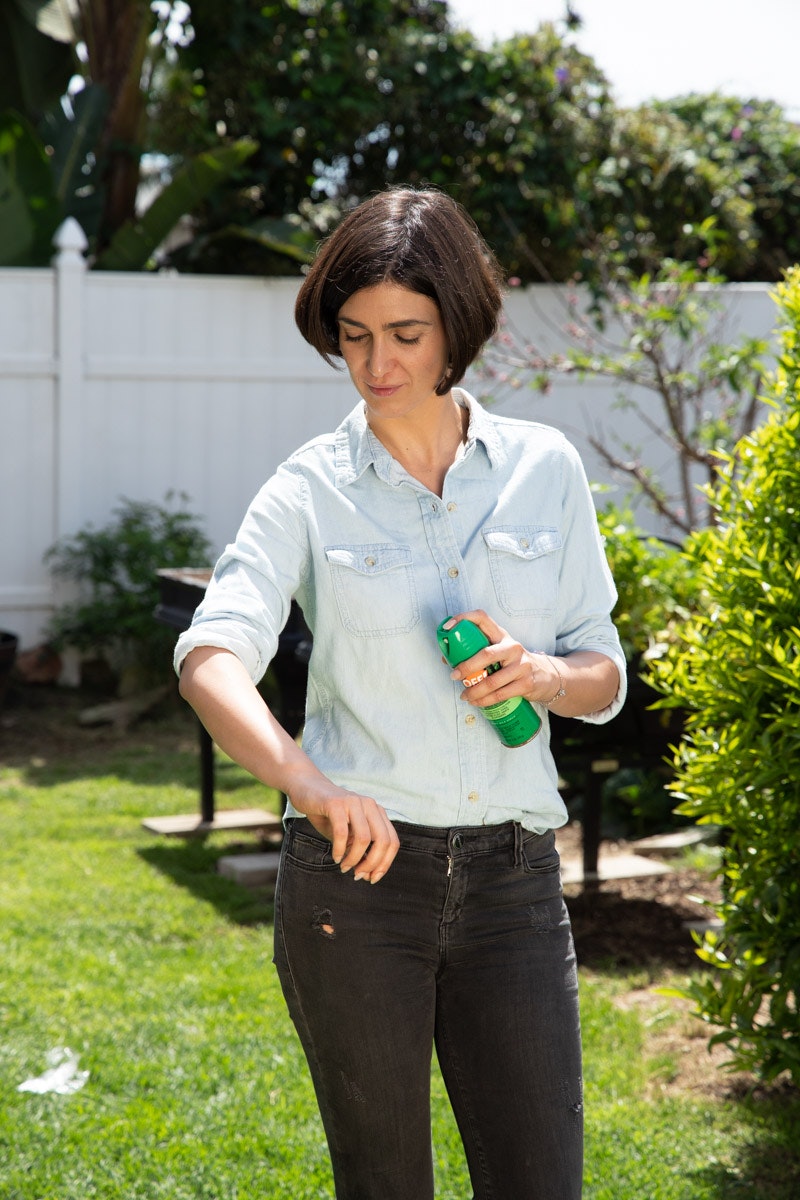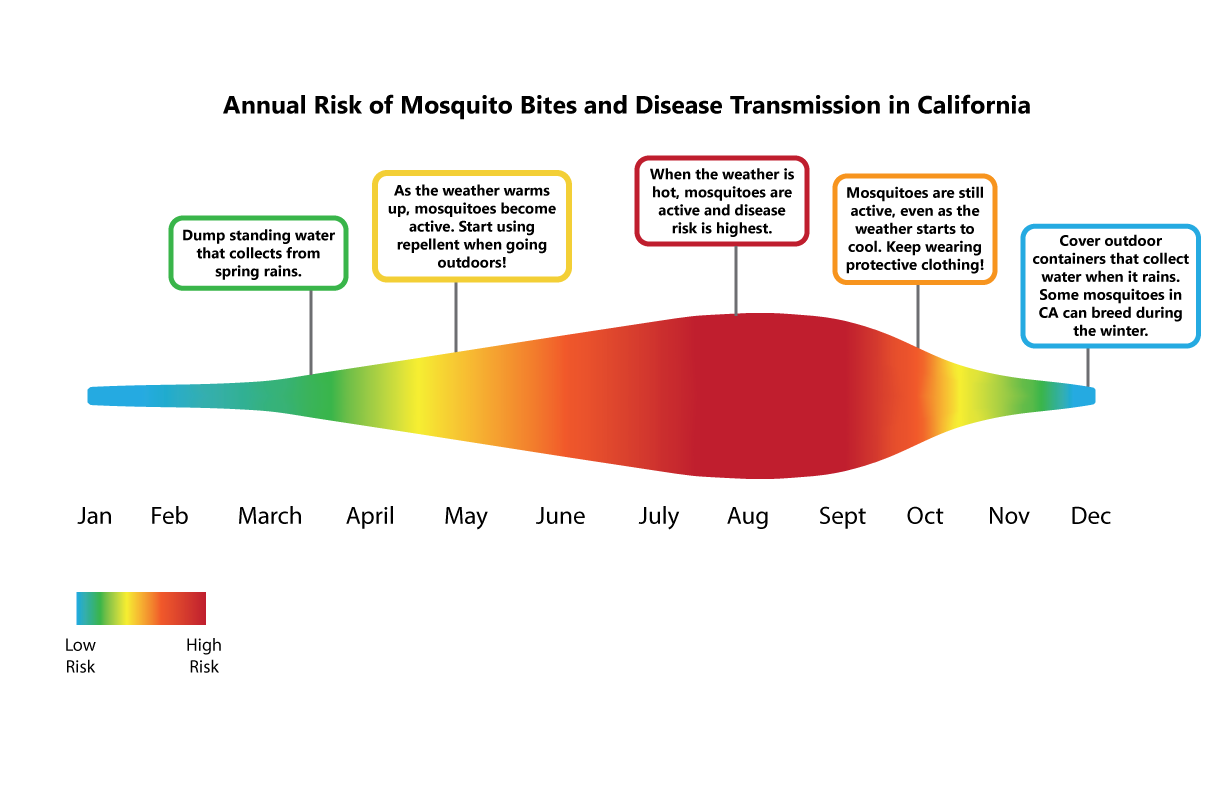Mosquito Repellent Information
When choosing a repellent to prevent mosquito bites, look for the following information on the product label:

Active Ingredient
- DEET
- Picaridin
- IR3535
- Oil of Lemon Eucalyptus (OLE)
Protection Time or Active Ingredient Percentage (%)
Not all products will list the number of hours that the repellent works to prevent mosquito bites. A repellent with a higher percentage of active ingredient will work longer to keep mosquitoes from biting you.
Choose a repellent that will protect you for the amount of time you plan to be outdoors. Please keep in mind, when you are sweating or getting wet, repellents will not last as long.
Who should use repellent and when?
Use repellent when you spend time outdoors in areas with mosquitoes especially during warmer months of the year.
EPA-registered repellent is safe for use on:
- Adults
- Pregnant or breastfeeding women
- Children older than 2 months
According to the California Department of Public Health, insect repellent should not be used on babies younger than 2 months old. To protect babies from mosquito bites, dress the child in clothing that covers arms and legs, and cover the child's crib, stroller, or baby carrier with a mosquito net.
Mosquitoes are more active during warmer months, and you are more likely to be bitten during these times. Different kinds of mosquitoes are active at certain times of day. For example, the Culex mosquitoes that spread West Nile virus bite at dawn and dusk. You should use repellent if you will be outside early in the morning or late in the evening before it gets dark. The Aedes mosquitoes that may carry the Zika virus (called Aedes aegypti and Aedes albopictus) are found in Orange County and bite during the day. You should use repellent if you are outside during the day.
For more information on Zika, visit the CDPH Zika virus webpage or view a world map of areas with Zika.

